The hatchback pales in popularity to the crossover SUV, but it’s offered in a surprising variety of flavors. They range in concept from gilded economy cars to wild-eyed versions of luxury cars, and some even dip into crossover territory. The Hyundai Kona N is a wild child of a low-slung crossover, while the Toyota GR Corolla is the newest hot hatch, and it has an attitude of its own. We recently drove them back-to-back to find out which is more fun.
Both cars come from unassuming roots. The standard Corolla is the epitome of appliance transportation. It has a reputation for reliability and durability, but fun doesn’t play into the equation. The Kona plays the utility man role for Hyundai, offering electric and gas versions, both aimed at efficiency. Our two contenders couldn’t be any more different from the vehicles on which they’re based.
Oddly, while the Hyundai Kona N is the vehicle with the crossover roots, it’s the GR Corolla that has all-wheel drive. But that’s not the biggest difference between these two. Let’s take a look at how they drive and decide on which we’d suggest for your garage.
2023 Toyota GR Corolla Core
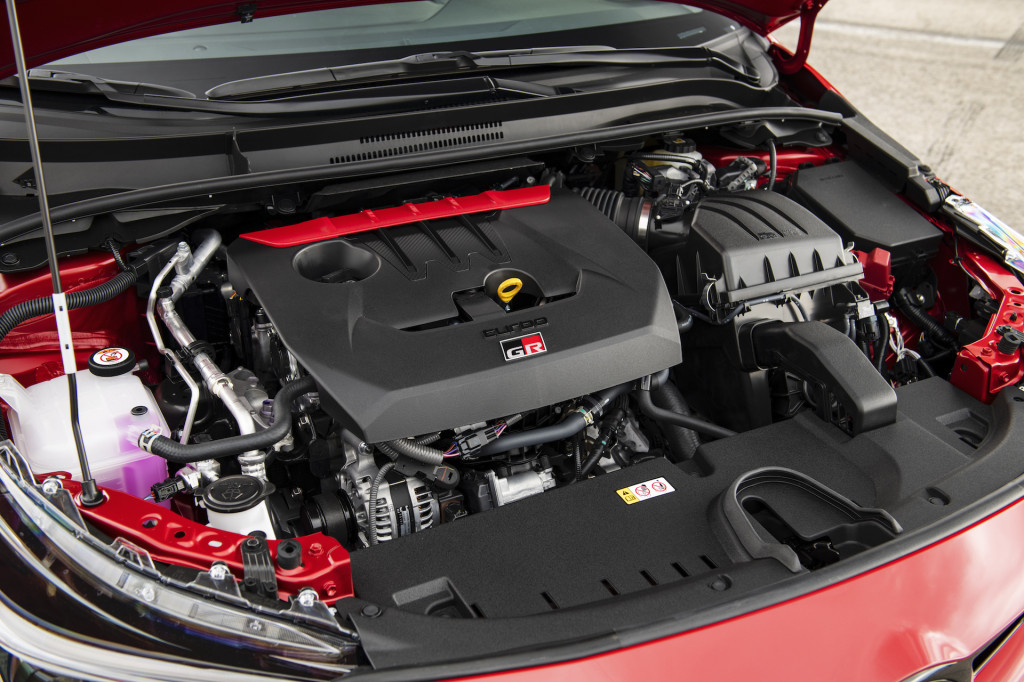
2023 Toyota GR Corolla Core

2022 Hyundai Kona N
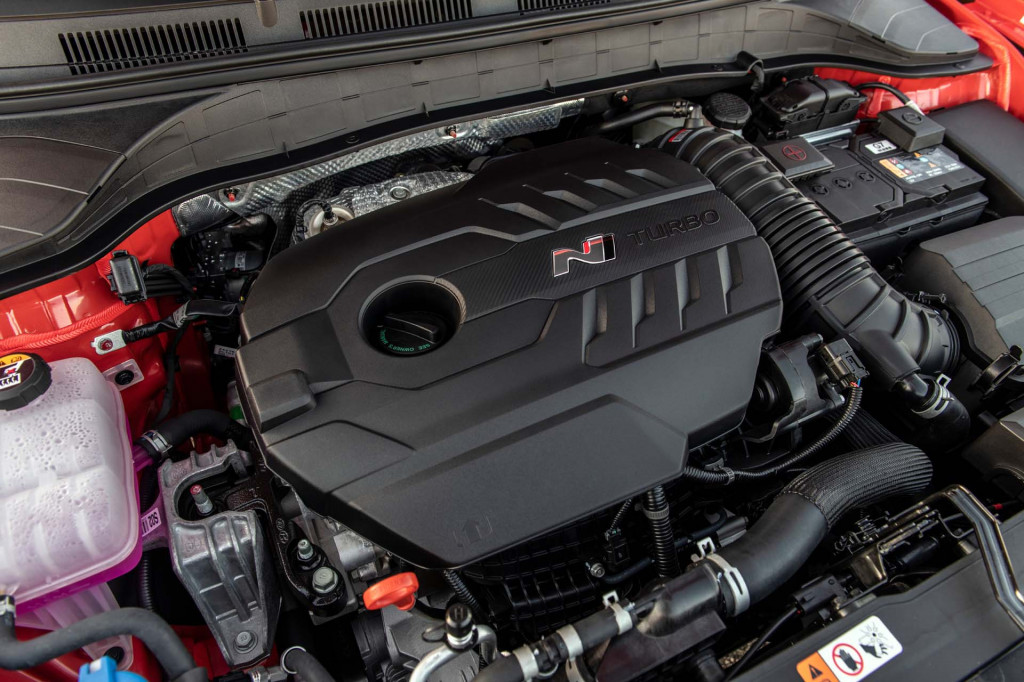
2022 Hyundai Kona N
Round 1: GR Corolla vs Kona N power delivery
Sometimes three is greater than four, and this is one of those cases. The Toyota GR Corolla is motivated by a 1.5-liter turbo-3 it shares with the GR Yaris that eludes us in the U.S. That little turbo-3 makes 300 hp and 273 lb-ft of torque, which are wild numbers for such a small engine.
The GR Corolla sends that power through a 6-speed manual transmission to a sport-focused all-wheel-drive system called GR Four. It has three settings that split the power differently, but always help it put down power efficiently to accelerate from 0-60 mph in 5.0 seconds (Toyota says 4.99, but…c’mon).
Hyundai goes with front-wheel drive and a 2.0-liter turbo-4 that spins up 276 hp and 289 lb-ft. An overboost feature can up the output to 286 hp for short bursts that require 40 seconds between shots of adrenaline. The turbo-4 launches the demonic crossover from 0-60 in 5.2 seconds.
The 0-60 mph times are close, but the way these two get there is very different. The power always feels like it’s at the ready in the Kona N, especially in Sport+ or N modes, which can make the powertrain even seem too high strung. The revs stay high, and the throttle gets as itchy as Clint Eastwood’s trigger finger. It sends the power through an 8-speed dual-clutch automatic transmission with quick, crisp shifts, and Hyundai doesn’t offer a manual. The turbo-4 doesn’t have a lot of power at the high end, and it won’t be mistaken for a V-8 or a high-power EV, but its frisky power delivery fits with the whole character of the car.
The GR Corolla requires more effort to make its power. With little displacement to deliver ready torque down low, it relies on a heavy dose of boost—26.2 psi—to make its power. A larger turbo is needed for that much boost, so it takes awhile for the power to build. Even in the available Sport mode, the power doesn’t hit immediately as max torque doesn’t arrive until 3,000 rpm.
“Once the turbo has finally lit in the GR Corolla, it’s best to have it pointed in the right direction because the rocket fires,” senior producer Joel Feder said. That maths out, too, as it pulls hard and scoots the little hatch to 60 mph a touch quicker than the Hyundai. How easy the power is to access also rests in the driver’s hands more in the Toyota, as the only transmission is a 6-speed manual. Keep the revs high, drive it like you want to beat it, and the GR Corolla keeps rewarding you with a lot of power from a little engine. It has heart.
Advantage: GR Corolla, in a split decision.
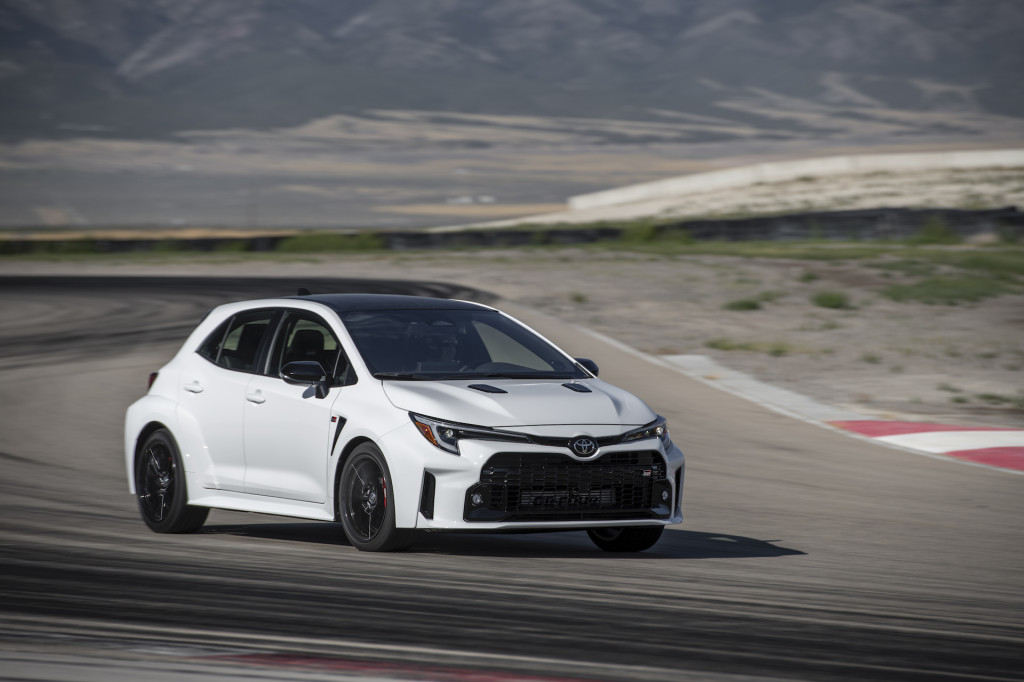
2023 Toyota GR Corolla Morizo Edition
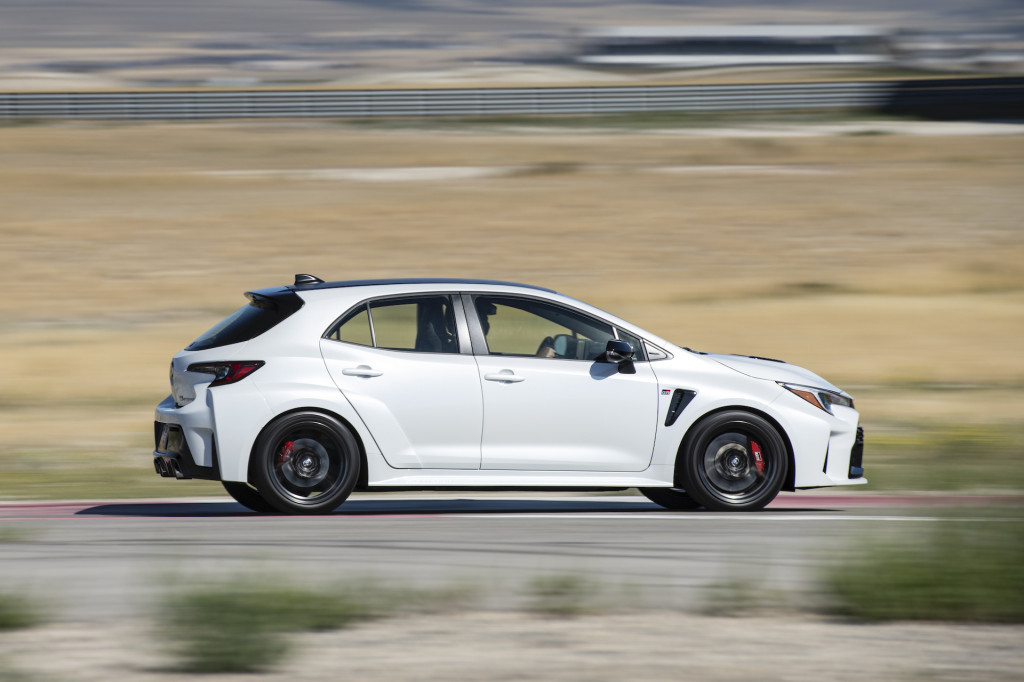
2023 Toyota GR Corolla Morizo Edition
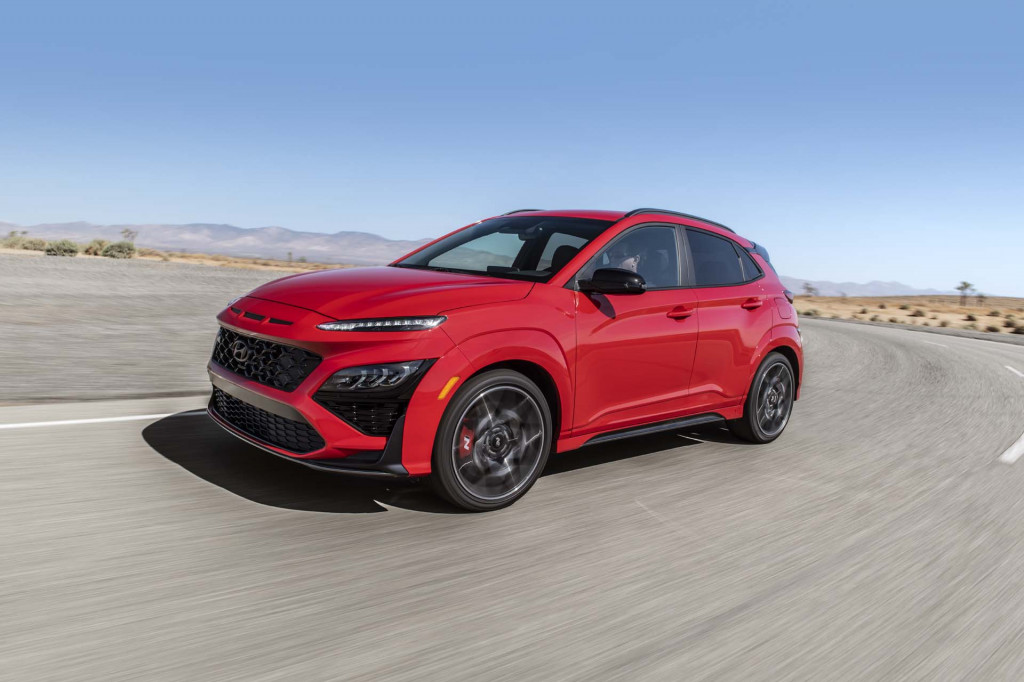
2022 Hyundai Kona N
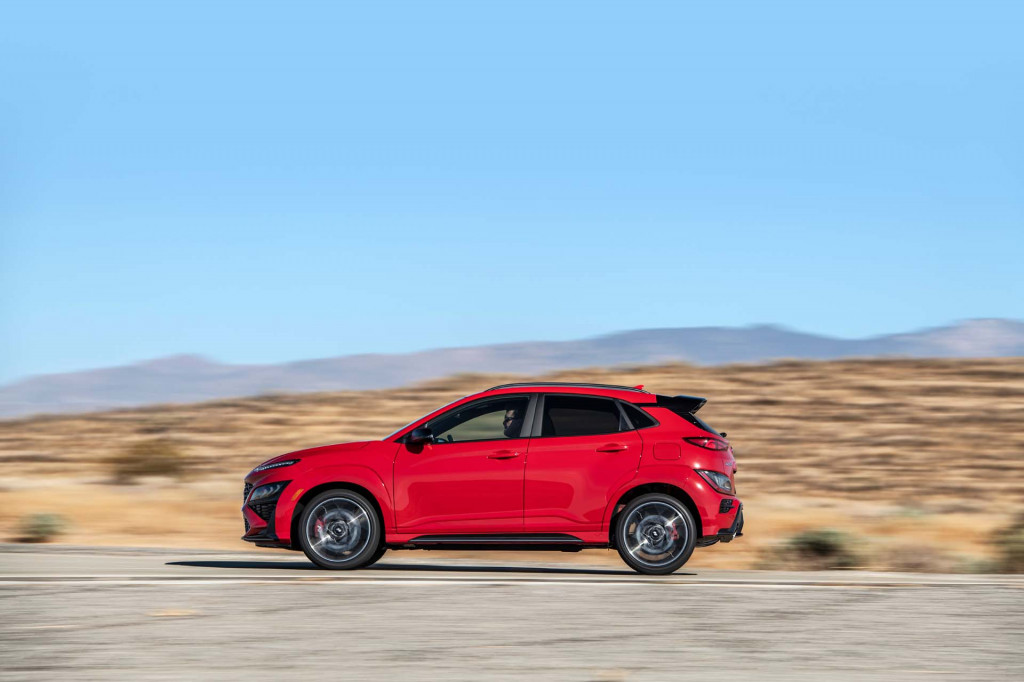
2022 Hyundai Kona N
Round 2: GR Corolla vs Kona N ride and handling
While the Corolla’s all-wheel-drive system improves the car’s power delivery, it does more to affect handling, especially when teamed with the Torsen front and rear limited-slip differentials that are optional on the base Core model and standard otherwise.
Toyota gives drivers a choice of three all-wheel-drive modes: Normal with a 60/40 front bias, Sport with a 30/70 rear bias, and Track with an even 50/50 split. Opting for Track on a track or twisty road will pull the car out of corners with the front wheels, while the limited-slip differentials optimize power to better shoot the car out of turns. Sport mode makes the rear end feel freer.
“It’s a hoot to have a 30/70 power split in the GR Corolla and kick the tail out while the front tires claw at the pavement,” Feder said. In either mode, the GR Corolla’s very stable handling makes it easy to place in corners.
The GR Corolla’s steering is endearing. With a 12.7:1 ratio, it’s fast, and the car reacts quickly to driver inputs. The steering provides inputs of its own that tell the driver what’s happening at the wheels in an analog way that’s uncommon these days.
Toyota upgrades the suspension with track-tuned springs, dampers, and stabilizer bars, and outfits the car with 235/40R18 Michelin Pilot Sport 4 tires. The suspension tuning does a good job of controlling body lean, and the tires provide good grip, though the Pilot Sport Cup 2 tires on the Morizo edition are even better. While the stiffer suspension firms up the ride, it’s not too harsh to drive on a regular basis.
Anyone iffy about the firmness of the GR Corolla’s ride will want to avoid the Kona N. Its adjustable dampers turn the ride harsh in N mode. The upside is you’ll know the location of every crack, rut, bump, and pothole on your street. The ride is still firm in Sport+ mode and never checks in less than hard.
The firm damping is needed to control the body motions of a vehicle that sits 6.8 inches off the ground, 1.5 inches higher than the Toyota. It wrangles the vehicle’s weight well for a crossover, but the vehicle still leans more than the GR Corolla. The issue is exacerbated by a taller seating position within the vehicle that creates notable body lean and head toss for passengers.
“The Kona N feels tippy and top heavy compared to its Elantra N sibling, and we kind of miss the Veloster N. Practically comes at a price of dynamics,” Feder noted.
Still, the Kona N handles quite well. The steering is quick and the car dives into turns at the first twitch of the steering wheel. It exits turns well, too, thanks to a standard limited-slip differential that prevents spin on the inside front tire. The Kona N gathers its weight and body lean to head in the next direction quite well, but, again, its taller ground clearance means its handling isn’t as accomplished as the GR Corolla’s.
Advantage: GR Corolla.
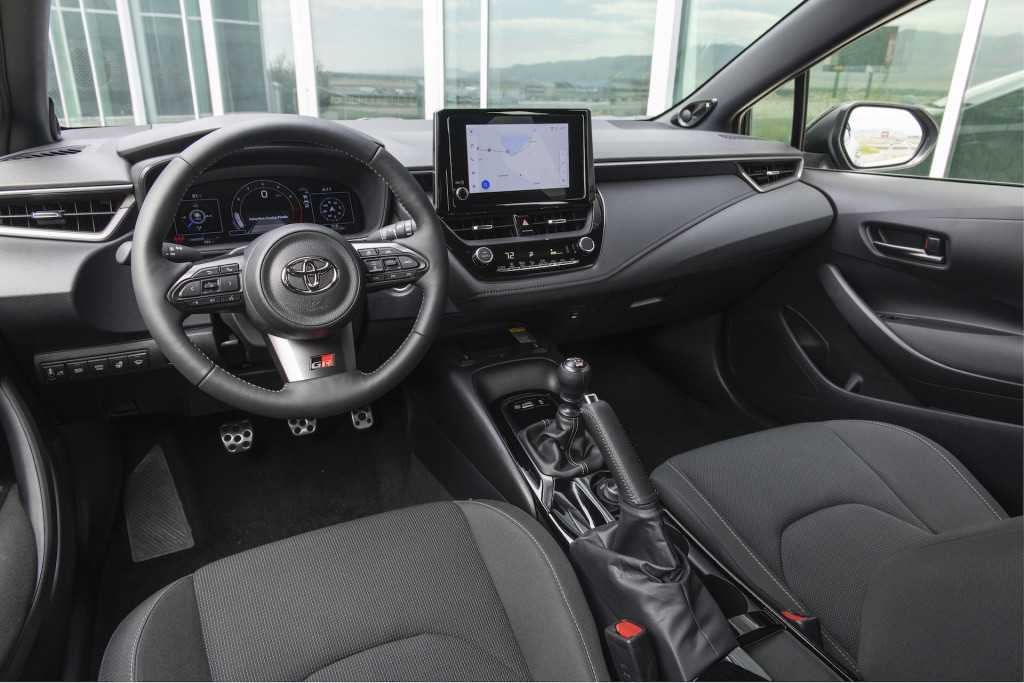
2023 Toyota GR Corolla
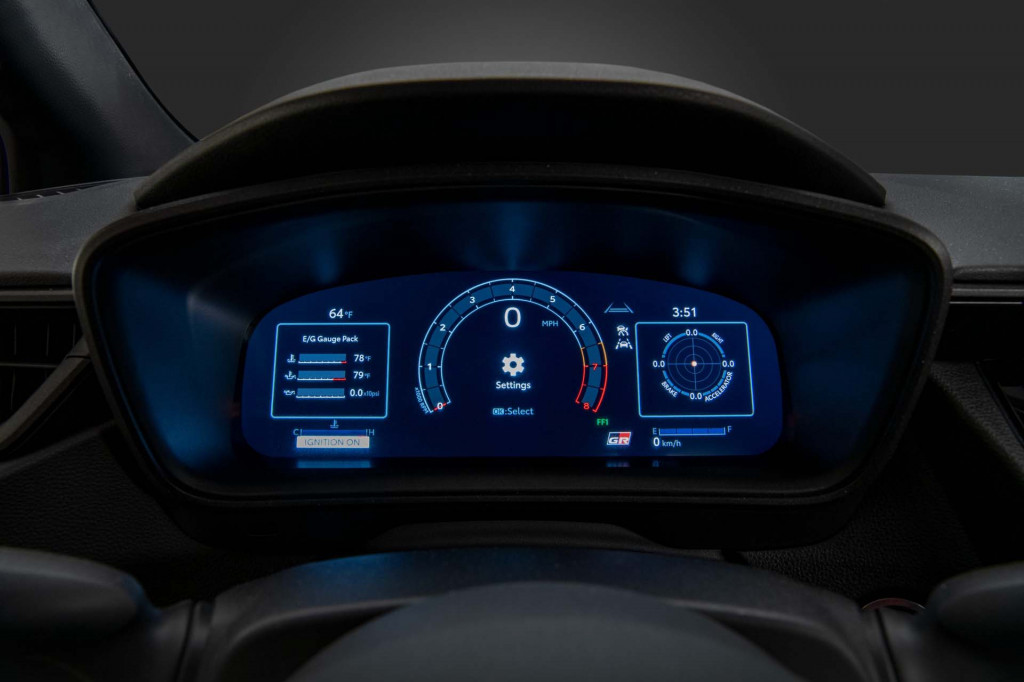
2023 Toyota GR Corolla Morizo Edition
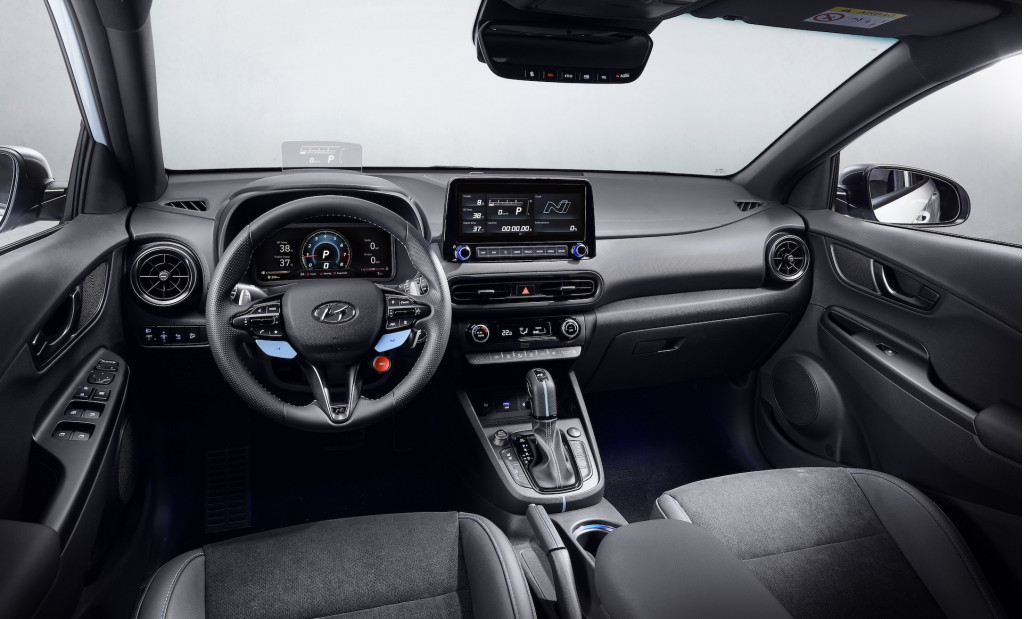
2022 Hyundai Kona N
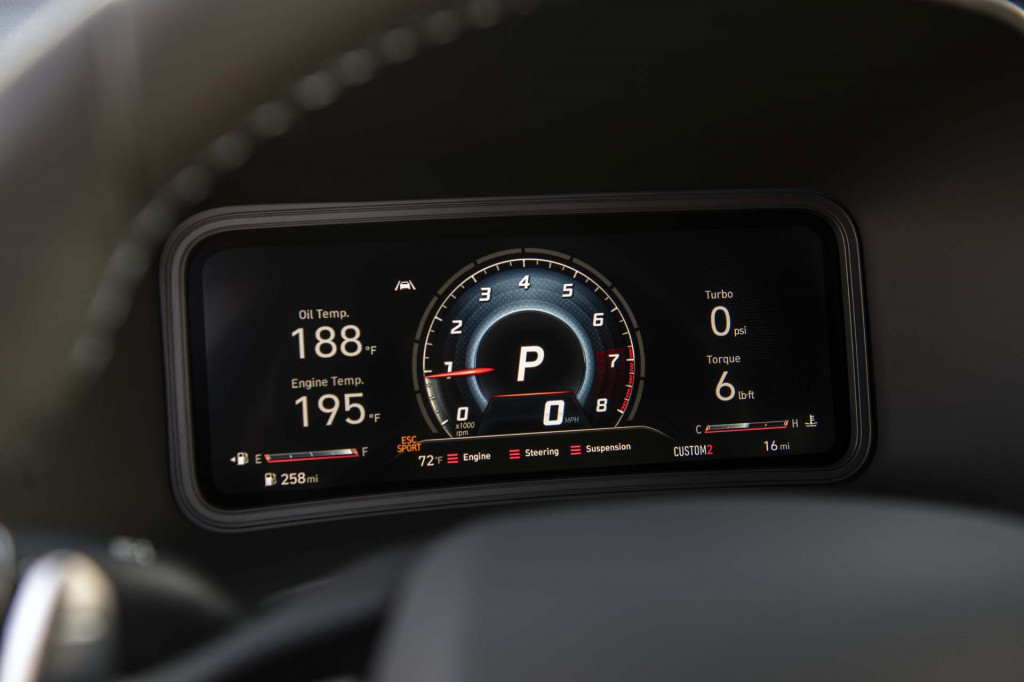
2022 Hyundai Kona N
Round 3: GR Corolla vs Kona N cabin space and quality
While both cars are dynamically gifted, they both fall down when it comes to interior quality. They both start as econoboxes, and both still have the vestigial hard plastics from their lesser siblings. Other cost-saving measures include a lack of a center console in the Toyota, and few sound deadening materials in both.
“It’s clear the entire budget for both of these cars was spent on the powertrain and dynamics,” Feder quipped.
However, both automakers upgrade the interiors with some better materials and sporty features. Toyota wraps the GR Corolla’s dash in synthetic leather, installs sport seats with silver contrast stitching, adds metal pedals, and provides a 12.3-inch digital instrument cluster with displays for the boost pressure, g forces, and the GR Four drive modes. However, Feder noted the digital cluster felt like it was designed in MS Paint 20 years ago.
The GR Corolla has 17.8 cubic feet of cargo space behind the rear seat compared to 19.2 cubes for the Hyundai. Its shape also gives it less total cargo space, but Toyota doesn’t provide a measurement.
The Hyundai has metal pedals, sport seats with blue contrast stitching, N-specific displays in its 10.3-inch center touchscreen, and an N-themed digital gauge cluster with helpful gauge displays for turbo boost, engine and oil temperature, and throttle position.
“The high-back sport bucket seats up front in the Kona N are a full step nicer in their materials, design, and look than those in the GR Corolla,” Feder said.
The Hyundai’s cabin also benefits from its Kona roots, with a more usable rear seat and up to 45.8 cubic feet of cargo space with the rear seats folded down.
Advantage: Kona N.
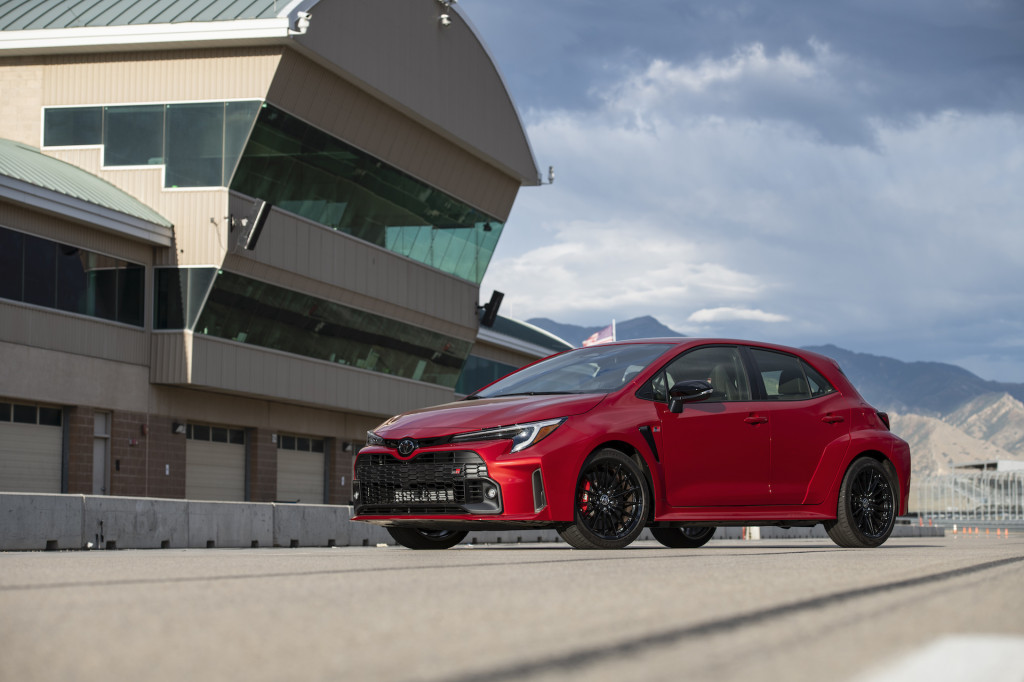
2023 Toyota GR Corolla Core
The decision: GR Corolla
The Toyota falls down a bit on value compared to the Kona N as it starts at $36,995, and by the time you add the Torsen differentials the price approaches $39,000. The Kona N, on the other hand, starts at $35,495 and no other equipment is needed. Then again, that price disparity can be at least partially chalked up to a lack of all-wheel drive in the Hyundai.
All things considered, the GR Corolla wins here because it’s the more dynamically gifted of the two cars. We prefer its analog feel and relish more time behind the wheel. It’s not as utilitarian as the Hyundai, but it’s easier to live with both in power delivery and ride quality. Both cars, however, are performance values that show the hot hatch can be very appealing in a variety of shapes and sizes.
